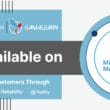Covering Classical Test Theory, Item Response Theory, CAT Vs MST, AI-Based Adaptive, and more.
Staying updated on the latest developments in digital Psychometric Assessments has never been more crucial. However, navigating through technical terms can be challenging. To assist you, we have compiled a glossary of terms relevant to psychometric assessments. Whether you are just beginning to explore digital Psychometric Assessments or already utilizing digital tools and aiming to stay informed about industry trends, this article is a valuable resource.
Contents
Psychometric Assessments: An Introduction

The word, Psychometric, has been derived from the Greek words for mental and measurement.
Psychometric assessment is a tool used to evaluate an individual’s personal characteristics through specialized testing, measurements, assessments, scales, graphs, and activities. These assessments cover various aspects of an individual’s behavioral style, intelligence, personality, beliefs, attitudes, educational achievements, introversion, and mental capabilities. Initially developed for psychological purposes, psychometric assessments are now commonly used in the educational sector.
Types of Psychometric Tests:
Aptitude Tests: Aptitude tests measure intelligence, logical reasoning, and cognitive abilities against a standard baseline. They include verbal reasoning, diagrammatic reasoning, error checking, numerical reasoning, spatial reasoning, written communication, and situational judgment tests.
Personality Tests: Personality tests assess character traits, values, motivations, interests, and emotional responses to predict how well an individual fits into a business or organization. Common assessments include the Myers-Briggs Type Indicator (MBTI), Occupational Personality Questionnaire (OPQ), Minnesota Multiphasic Personality Inventory (MMPI), Five-Factor Model (Big 5), and Personality and Preference Inventory (PAPI).
Advantages of Psychometric Assessments:
- Cost Savings: Conducting psychometric assessments is cost-effective and can reduce costs associated with poor students’ performance and turnover.
- Objectivity: These assessments provide impartial results.
- Efficiency: Psychometric assessments save time in the examination process.

Conducting a Psychometric Assessment: Things to Know:
- Understand the purpose of the assessment and tailor it accordingly.
- Implement safeguards against cheating, especially in online assessments.
- Review test results alongside other information, recognizing that psychometric assessments are not infallible.
A foundational understanding of assessment theories and methodologies is very helpful. Classical Test Theory (CTT) has long been the bedrock of psychometric evaluation, emphasizing the reliability and validity of tests. Delving into CTT principles is fundamental for establishing a robust groundwork in psychometrics. As we navigate further, we encounter Item Response Theory (IRT), a more sophisticated approach that delves into the intricacies of each test item, considering the probability of correct responses based on an individual’s ability level.
Beyond these theories, the ongoing debate between Computer-Adaptive Testing (CAT) and Multistage Testing (MST) presents a difference, each with its merits in optimizing the assessment process. Moreover, the integration of Artificial Intelligence (AI) into psychometrics introduces a new era of precision and personalization through AI-based adaptive assessments. This exploration extends further into the dynamic field’s future, unveiling emerging trends and innovations, from gamified assessments to virtual reality simulations, promising to revolutionize talent evaluation. Understanding these concepts is vital for professionals seeking to navigate the evolving landscape of psychometric assessments.
Classical Test Theory (CTT)
Classical Test Theory (CTT) serves as the foundational framework for traditional psychometric testing aiming to ensure the reliability, precision, and accuracy of test scores by minimizing errors. This theory is best illustrated by the formula:
Observed Score (X) = True Score (T) + Error (E)
For instance, in a numerical reasoning test where a candidate scores 16 out of 20, their “Observed Score” is 16. However, due to inherent measurement errors, this observed score deviates from the candidate’s “True Score,” representing their actual level of numerical reasoning, which remains elusive under CTT. The discrepancy between the observed and true scores is determined by the degree of error associated with the assessment, with less reliable assessments exhibiting greater error.
Understanding the principles of CTT is fundamental to building a solid foundation in psychometrics.
Item Response Theory (IRT)
Item Response Theory is a more advanced approach that considers the probability of a correct response to a test item based on an individual’s ability level. Unlike CTT, IRT provides a nuanced understanding of each item’s difficulty and discrimination.
While CTT is effective for assessments employing a standardized set of questions, it falls short in item-banked assessments. CTT’s premise that only true score and error influence observed scores cannot accommodate variations in question difficulty, item discrimination, and guessing, necessitating parameterization in item-banked assessments. IRT addresses this complexity by incorporating these parameters into observed scores, liberating assessments from fixed-form requirements.
Utilizing SwiftAssess for psychometric evaluations empowers users to harness the power of advanced technology, facilitating adaptive testing, item banking, and real-time analytics for personalized assessment experiences. Checkout the following whitepapers on the different stats and metrics that SwiftAssess provides – for both CTT and IRT.
CAT Vs MST
The debate between Computer-Adaptive Testing (CAT) and Multistage Testing (MST) has been ongoing, with each approach having its merits. CAT tailors the difficulty of questions based on the test-taker’s responses, optimizing the assessment process. On the other hand, MST involves presenting fixed sets of questions in stages.
“In the evolving landscape of assessment methodologies, the choice between established approaches like CAT and MST requires careful consideration, as each method offers unique advantages and challenges.” – Dr. Jane Smith, Assessment Specialist
Adaptive testing assumes the test’s difficulty adapting to the candidate’s performance, becoming more challenging or easier based on whether the answers are correct or incorrect.
The concept behind Computerized Adaptive Testing (CAT) is straightforward: Present candidates with the most suitable questions rather than repeating the same ones. As candidates progress through the test, CAT algorithms continuously assess their abilities in real time. This assessment guides the adjustment of the test’s difficulty level, ensuring that appropriately challenging questions are presented.
This methodology offers each student a personalized testing encounter, aimed at achieving the highest precision within the shortest timeframe possible. By embracing this approach, CATs demonstrate heightened accuracy, significantly reduce opportunities for cheating, and enhance the overall candidate experience.
Multistage testing offers a way to harness several advantages of adaptive testing, as outlined below while providing greater oversight over content and exposure. In addition to regulating content at the examinee level, it facilitates the organization’s management of item bank utilization.
There are several advantages of MST, many of which overlap with those of CAT.
- Reduced exam duration: Targeting difficulty levels minimizes time waste.
- Enhanced security: Numerous possible configurations prevent everyone from encountering the same item sequence, unlike in linear exams.
- Improved engagement: Both low- and high-ability students remain motivated, as low-ability students aren’t discouraged, and high-ability students aren’t bored.
- Content management: While CAT incorporates some content control algorithms, they may not always suffice.
- Review capability: Unlike CAT, which typically doesn’t allow for review (where students can revisit questions to change answers), MST does.
Whether you are conducting aptitude tests, personality assessments, or specialized evaluations, integrating SwiftAssess features can optimize your assessment strategies, enabling you to unlock new levels of insight and efficiency in talent evaluation and educational measurement. The platform is an excellent example of demonstrating different psychometrics assessment tools and metrics. Check out this case study to learn more about our success story with one of the leading SAT Test-Prep institutions in the United States.
LOFT
Linear-on-the-fly testing (LOFT) is an advanced assessment methodology that offers a flexible and efficient way to evaluate student learning. It combines elements of traditional linear testing with adaptive and personalized assessment techniques. While maintaining a linear format (where each student receives a fixed sequence of questions), LOFT adapts the content to match the student’s ability level. This personalization ensures that the questions are neither too easy nor too difficult, optimizing the assessment experience for each student. Also, by generating unique tests for each student, LOFT minimizes the chances of cheating and question sharing, thereby preserving the integrity of the assessment process.
AI-Based Adaptive Assessments
As technology continues to advance, Artificial Intelligence (AI) has made its way into the world of psychometric assessments. AI-based adaptive assessments leverage machine learning algorithms to continuously adapt the test difficulty in real time, enhancing precision and personalization.
“As we embrace the integration of AI in psychometric assessments, we open doors to unprecedented levels of precision and personalization, revolutionizing the way we evaluate individuals’ capabilities.” – Dr. David Johnson, AI Researcher
Best Practices for Implementation
Navigating the world of psychometric assessments involves understanding the foundational theories, choosing between established methodologies like CAT and MST, and embracing the potential of AI-based adaptive assessments. As the field evolves, staying informed about emerging trends and adopting best practices becomes essential for leveraging the full potential of psychometric evaluations in various domains. Whether you are a professional, educator, or researcher, this A-Z guide aims to equip you with the knowledge needed to make informed decisions in the dynamic area of psychometrics.
References:
- Embretson, S. E., & Reise. Item Response Theory for Psychologists. Lawrence Erlbaum Associates.
- Hambleton, R. K., Swaminathan, H., & Rogers. Fundamentals of Item Response Theory. SAGE Publications.
- Lord, F. M. Applications of Item Response Theory to Practical Testing Problems. Lawrence Erlbaum Associates.
- McBride, J. R., & Martin, D. Item Response Theory: Basics and Applications. SAGE Publications.
- Weiss, D. J. Improving Measurement In Education and Psychology: A Practical Approach. Lawrence Erlbaum Associates.





